The Role of. The shock which cleared the cavity may have.

Broadband Smoothed X Ray Image Of Abell 2597 The Surface Brightness Is Download Scientific Diagram
B HST image of.

. The background image blue is from the NASAESA Hubble Space Telescope. We report aperture photometry of the BCG. Cool core 1 keV.
Baum Patrick Cote Laura Ferrarese Paul Goudfrooij Duccio Macchetto Sangeeta Malhotra Christopher P. HST FUV Observations of Brightest Cluster Galaxies. The BCG was clearly detected in all Spitzer bandpasses including the 70 and 160 μm wave bands.
Magellan WBaade Telescope UMaryland MMcDonald. 37 Full PDFs related to this paper. The spectral energy distribution exhibits a clear excess in the far-IR.
A short summary of this paper. We are not allowed to display external PDFs yet. Specifically Abell 1795s and Abell 2597s SFR are 9 and 4 M yr respectively.
A new study of over 200 galaxy. Ture in the core of of the rich cluster Abell 2597 one of the massive cooling flow clusters Craw- ford et al. You will be redirected to the full text document in the repository in a few seconds if not click hereclick here.
The data reveal an extensive kpc-scale X-ray cavity network as well. The foreground red is ALMA data showing the distribution of carbon monoxide gas in and around the galaxy. NASA CXC Michigan State Univ GVoit et al.
Mark Voit Submitted on 10 Aug 2007 Abstract. Abell 2597 20 arcsec residual Chandra image with VLA 330 MHz radio contours low frequency emission shows radio extension from core to western hole Chandra image with 8 GHz radio contours overlaid McNamara et al. Summary Abell 2029 is very relaxed but there is significant.
Infrared Emission from the Nearby Cool Core Cluster Abell 2597. In 2018 the National Radio Astronomy Observatory NRAO captured cosmic weather event using the Atacama Large Millimetersubmillimeter Array ALMA that has never been seen before - a. It has a worldwide membership of around 5.
This image contains X-rays from NASAs Chandra X-ray Observatory blue optical data from the Hubble Space Telescope and the Digitized Sky Survey yellow and emission from hydrogen atoms red from the Walter Baade Telescope in Chile. Infrared Emission from the Nearby Cool Core Cluster Abell 2597. Abell 2597 shown here is a galaxy cluster located about one billion light years from Earth.
Abell 2597 is a galaxy cluster located about a billion light years from Earth in the constellation of Aquarius. 2000 ghost holes visible at radii larger than central radio source. The spectral energy distribution exhibits a clear excess in the far-IR.
This velocity structure is consis- tent with the observed redshift distribution of the galaxies. The BCG was clearly detected in all Spitzer bandpasses including the 70 and 160 μm wave bands. A Chandra X-ray HST and DSS optical and Magellan HaNII emission is shown in blue yellow and red respectively Credit.
Rather than a cooling flow we believe that this data supports the merger model Mot1 et al. INFRARED EMISSION FROM THE NEARBY COOL CORE CLUSTER ABELL 2597 Megan Donahue1 Andres Jordan2 Stefi A. We present new Chandra X-ray observations of the brightest cluster galaxy BCG in the cool-core cluster Abell 2597 z 00821.
Other strong cool core clusters such as Abell 1795 and Abell 2597 also have star formation rates at this scale. Composite image of Abell 2597 brightest cluster galaxy. Megan Donahue Andres Jordan Stefi A.
Accepted 2007 August 10. 2004 for the origin of the cool gas in this cluster. The scientists directly observed a clumpy rain of cold molecular gas clouds moving toward the core of the Abell 2597 Brightest Cluster Galaxy at about 671000 mph 1 million kmh.
We observed the brightest central galaxy BCG in the nearby z 00821 cool core galaxy cluster Abell 2597 with the IRAC and MIPS instruments on board the Spitzer Space Telescope. The cavity excavation timescale is 107 yr making it older than the youngest stars associated with the FUV emission but not as old as the oldest stars. According to this new study the regulation of the largest black.
A previous analysis of the Chandra X-ray image of the center of the cooling core cluster Abell 2597 showed two ghost holes in the X-ray emission to the west and northeast of the central radio galaxy PKS 2322-123. The Institute of Physics IOP is a leading scientific society promoting physics and bringing physicists together for the benefit of all. The pull-out box shows the ALMA data of the shadow black produced by absorption of the millimetre-wavelength light emitted by electrons.
Baum Patrick Cote Laura Ferrarese Paul Goudfrooij Duccio Macchetto Christopher P. Baum3 Patrick Coˆte 4Laura Ferrarese Paul Goudfrooij5 Duccio Macchetto5 Sangeeta Malhotra6 Christopher P. We observed the brightest central galaxy BCG in the nearby z00821 cool core galaxy cluster Abell 2597 with the IRAC and MIPS instruments on board the Spit.
Infrared Emission from the Nearby Cool Core Cluster Abell 2597. Star formation has therefore likely been ongoing throughout the creation of the cavity via AGN feedback. High Res 40 MB Low Res 262 MB With closed-captions at YouTube Astronomers have known for quite some time that supermassive black holes influence the growth of galaxies they live in but they have been trying to figure out exactly how.
Tour of Abell 2597 Quicktime. Infrared Emission from the Nearby Cool Core Cluster Abell 2597. We observed the brightest central galaxy BCG in the nearby z 00821 cool core galaxy cluster Abell 2597 with the IRAC and MIPS instruments on board the Spitzer Space Telescope.
By Megan Donahue Andres Jordan Stefi A. Download Full PDF Package. It is a giant elliptical galaxy that is surrounded by a sprawling cluster of other galaxies.
X-RAY CAVITY IN THE COOL-CORE CLUSTER ABELL 2597 ABSTRACT. Mark Voit1 Received 2007 April 23. We observed the brightest central galaxy BCG in the nearby z00821 cool.
Cold Rain in Abell 2597 An international team of astronomers using the Atacama Large Millimetersubmillimeter Array ALMA has witnessed a cosmic weather event that. We report aperture photometry of the BCG. Cool Gas Young Stars a b c Figure 1 jA multiwavelength view of the Abell 2597 BCG.
High Res 501 MB Low Res 134 MB MPEG. We observed the brightest central galaxy BCG in the nearby z00821 cool core galaxy cluster Abell 2597 with the IRAC and MIPS instruments on board the.

Active Galactic Nucleus Feedback In Clusters Of Galaxies Pnas
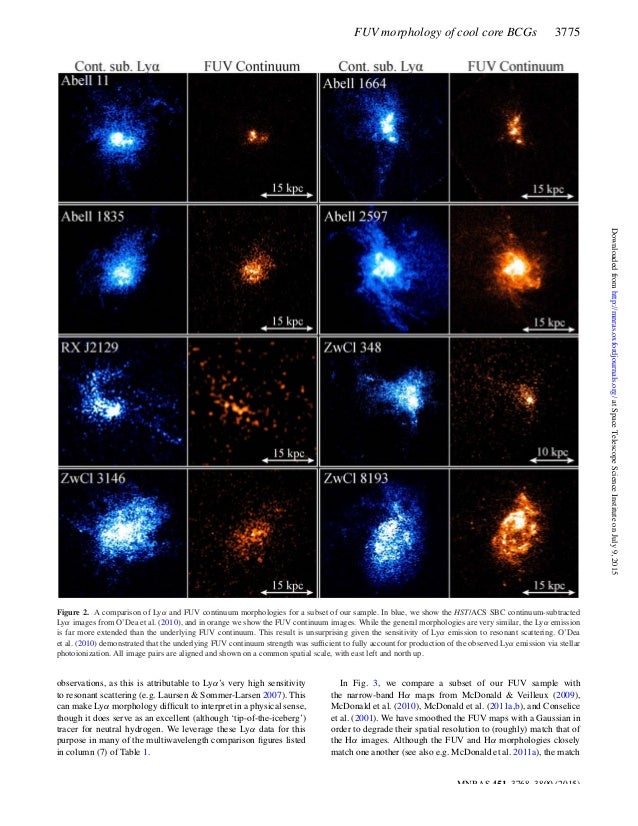
Far Ultraviolet Morphology Of Star Forming Filaments In Cool Core Bri

Chandras Clear View Of The Structure Of Clusters

Active Galactic Nucleus Feedback In Clusters Of Galaxies Pnas
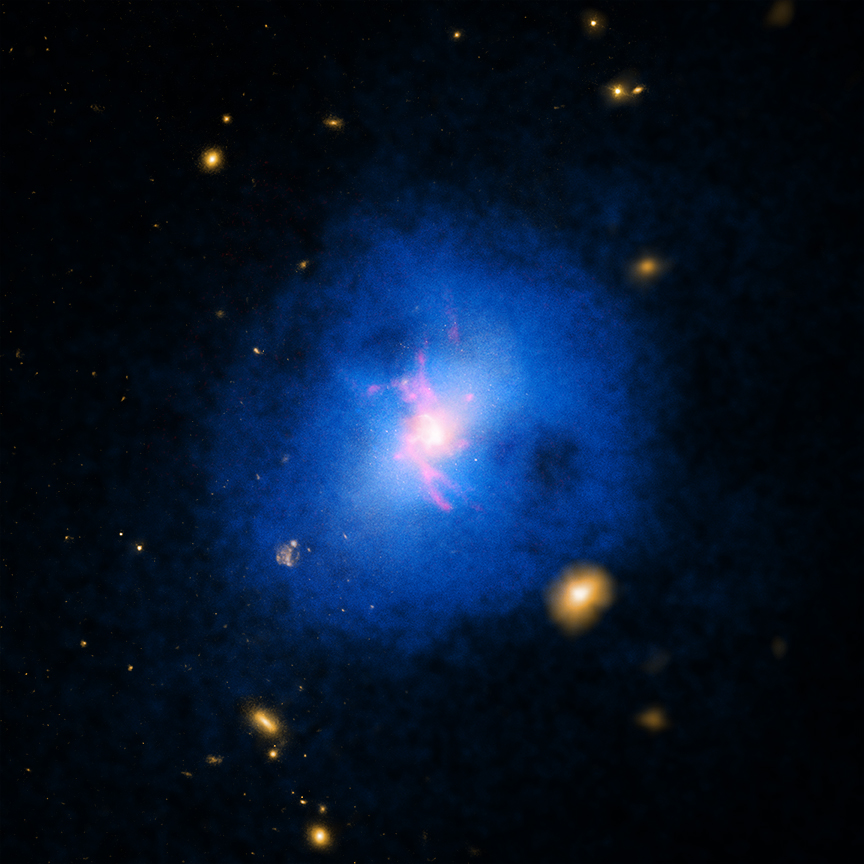
Study Explains Why Galaxies Don T Churn Out As Many Stars As They Should
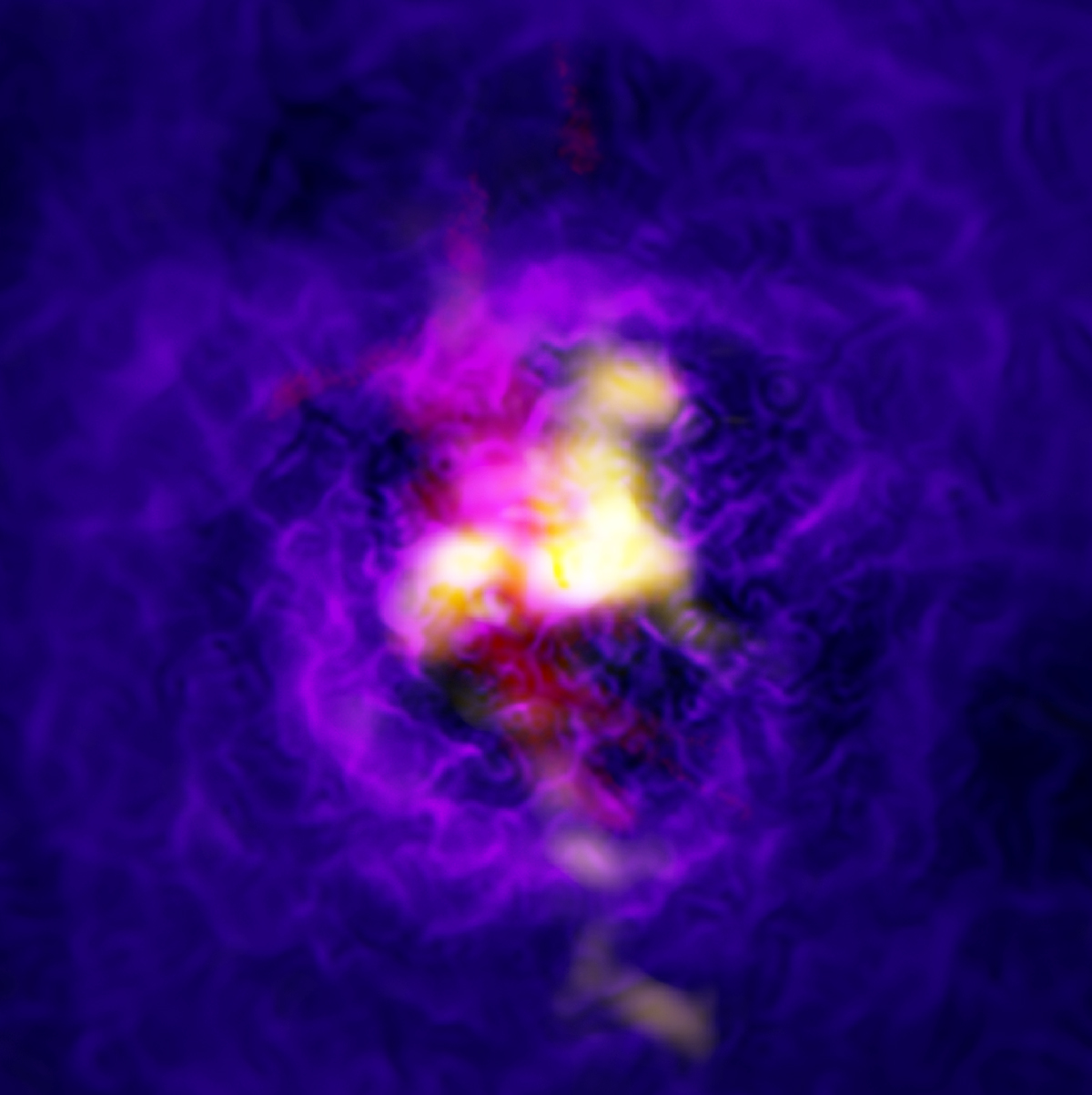
Galaxy Scale Fountain Seen In Full Glory Space Earthsky

Chris O Dea Rochester Institute Of Technology Ppt Video Online Download

Bremsstrahlung From Clusters Of Galaxies Clusters Of Galaxies A Short Overview Ppt Download
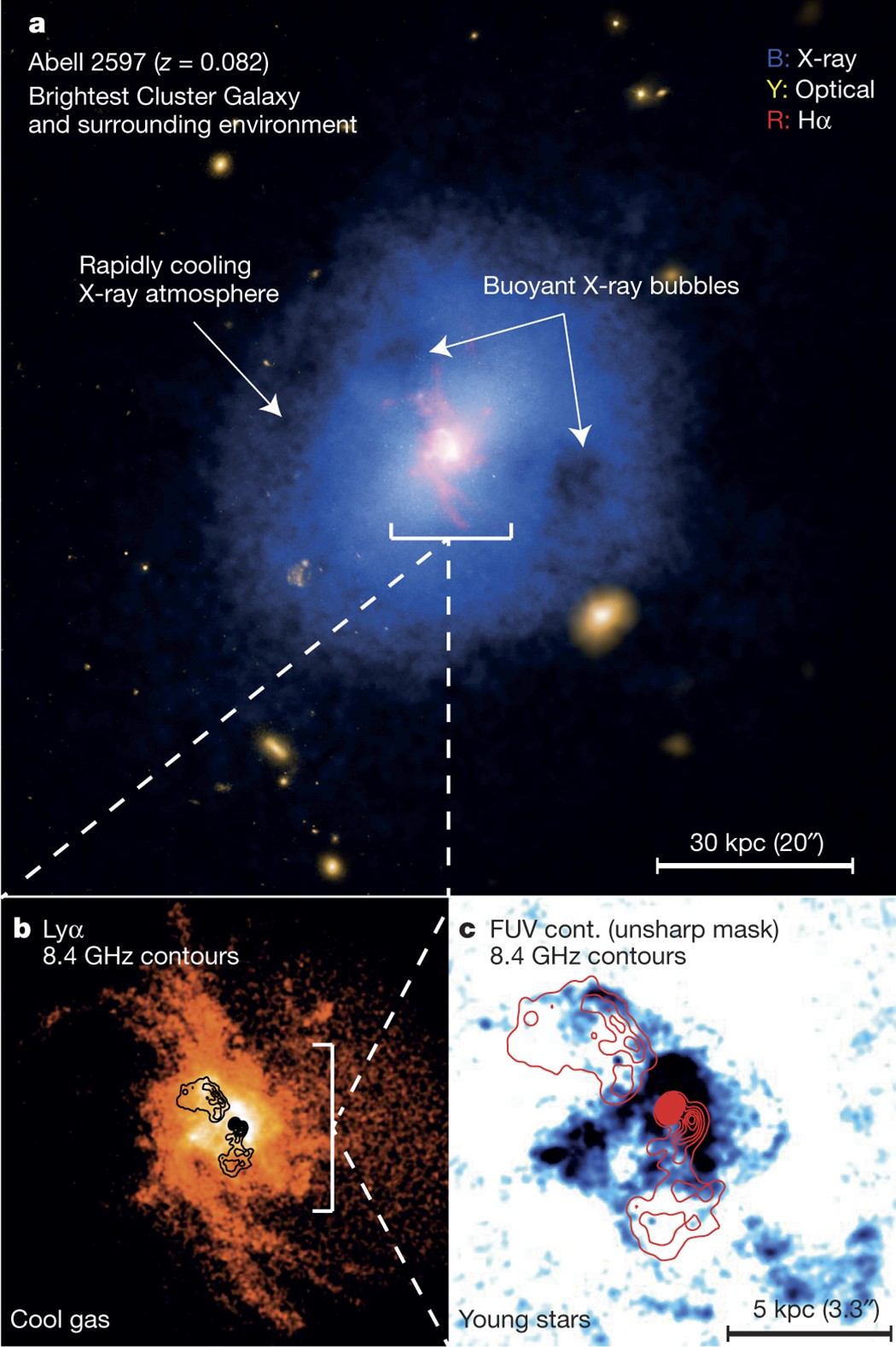
Cold Clumpy Accretion Onto An Active Supermassive Black Hole Nature
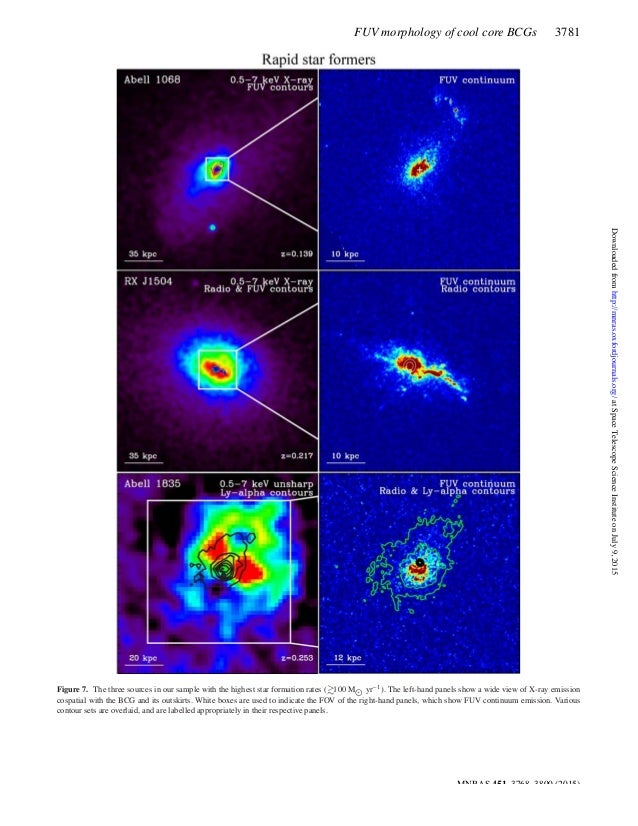
Far Ultraviolet Morphology Of Star Forming Filaments In Cool Core Bri
Astronomers Observe Feeding Habits Of Active Black Hole Astronomy Sci News Com
Astronomers Observe Feeding Habits Of Active Black Hole Astronomy Sci News Com

Chandras Clear View Of The Structure Of Clusters

A New Deeper Look At The X Ray Cool Core Cospatial With The A2597 Bcg Download Scientific Diagram

Chandras Clear View Of The Structure Of Clusters

Alma Witness Intergalactic Deluge Feeding A Black Hole Alma

A Multiwavelength View Of The Abell 2597 Brightest Cluster Galaxy Download Scientific Diagram